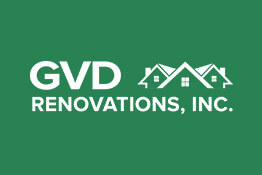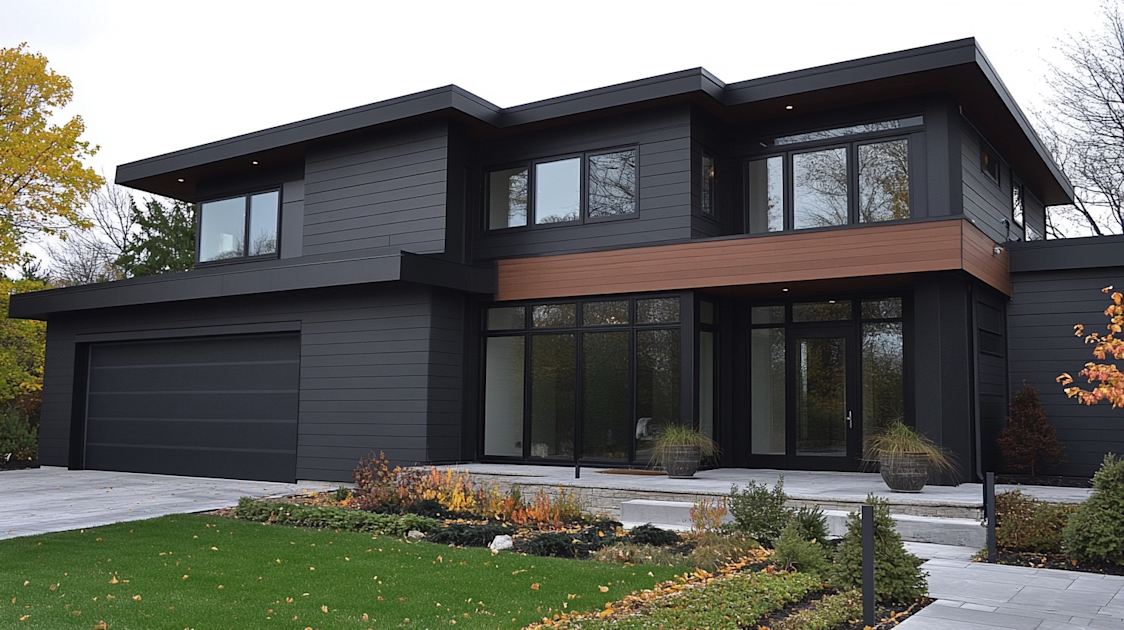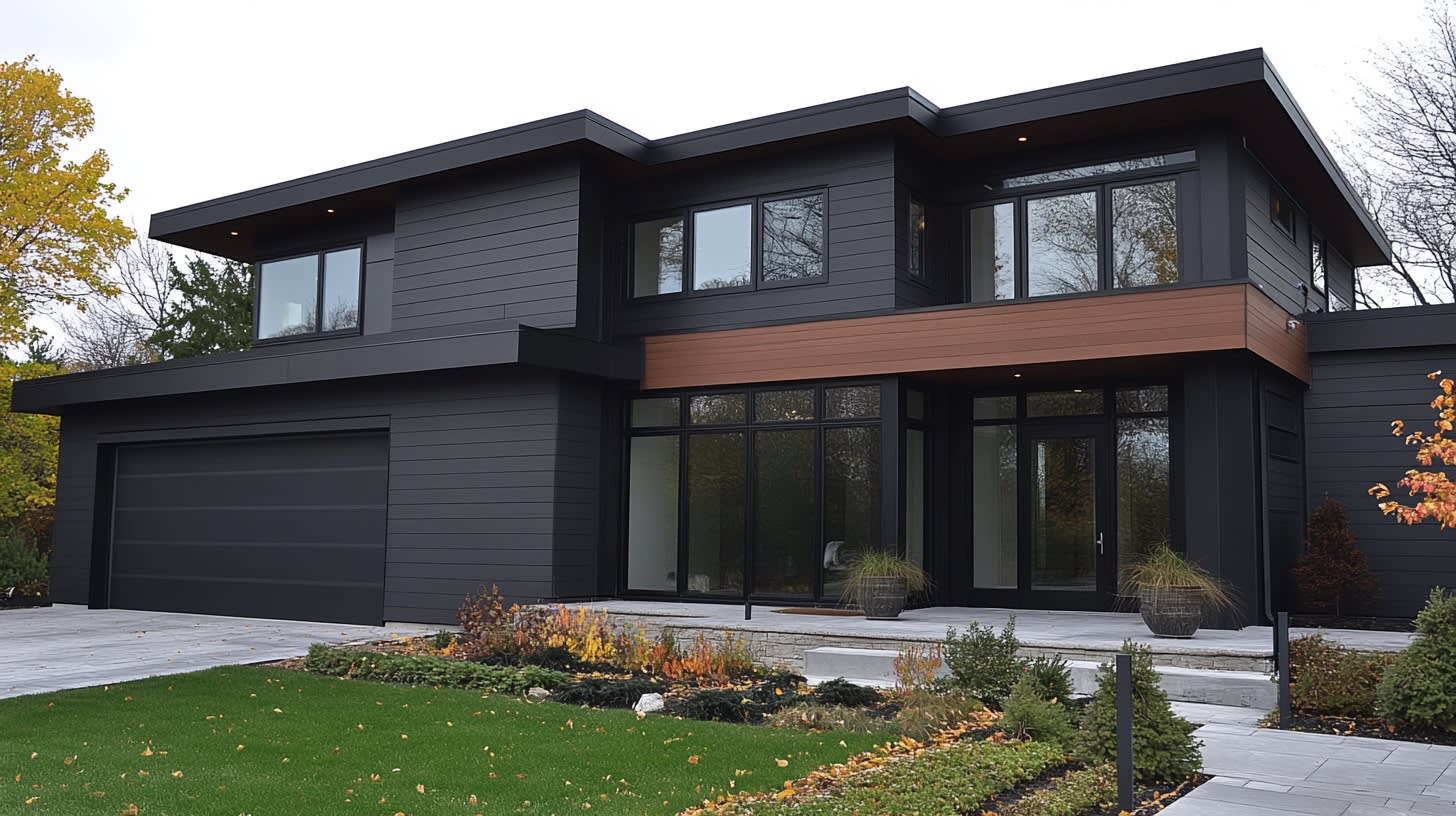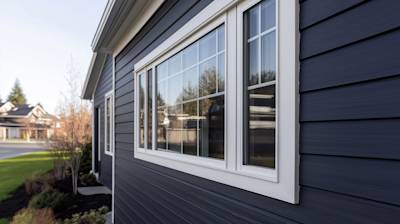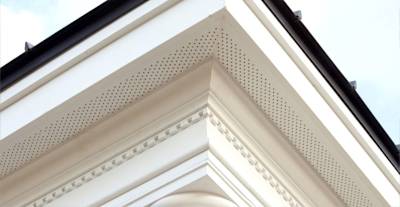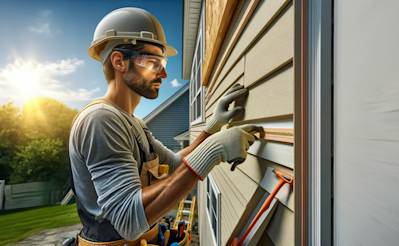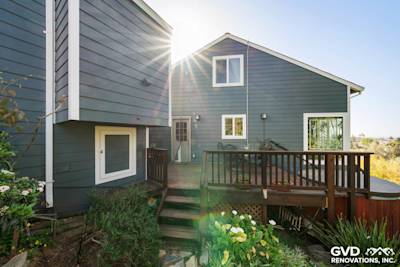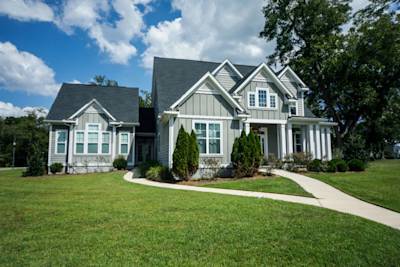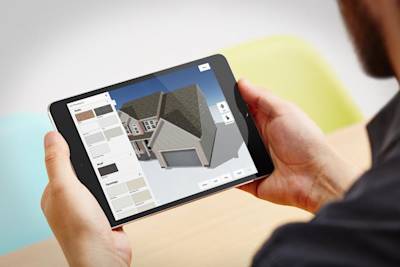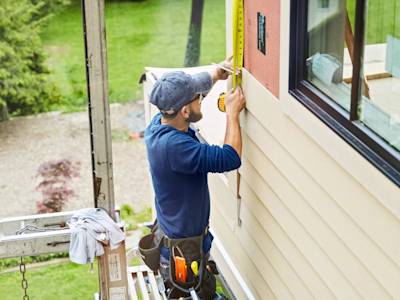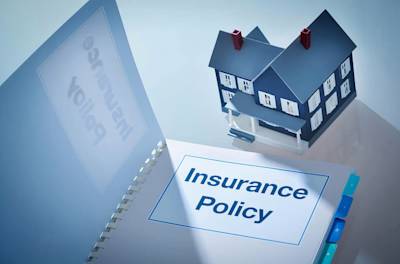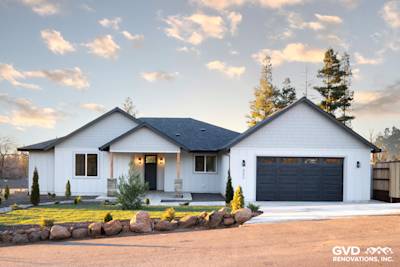What is Cement Board Siding?
Cement board siding, also known as fiber cement siding, is a type of durable and attractive material that's widely used for exteriors of residential buildings, particularly in areas with adverse weather conditions. It's known for its versatile appearance, high resistance to weather elements, and a commendable lifespan.
This construction material is constituted from a combination of cellulose fiber, sand, and cement. These elements undergo a meticulous manufacturing process to produce a well-crafted, eco-friendly product with exceptional quality ideal for every modern home construction or renovation endeavor.
Historical Background of Cement Board Siding
In the mid-1980s, James Hardie, an Australia-based company, pioneered the production of fiber cement products. Initially, the company used asbestos fibers, but due to the ensuing health risks posed by asbestos, it was replaced with cellulose fibers. This standout product gained traction for its appealing features, thus making a remarkable impact on the housing industry.
Types of Cement Board Siding
There are different types of cement board siding available in the market, designed to meet the varying needs of homeowners. They include:
- Plank siding: This is the most basic type mostly used to cover the entirety of home exteriors.
- Panel siding: It comes in large sheets, primarily used for interior and exterior walls of commercial buildings.
- Shingle siding: Designed to mimic wood shingles, this type is perfect for homeowners aiming to achieve a classic, timeless design.
- Stucco or brick siding: This type resembles the aesthetic appeal of stucco or bricks.
How is Cement Board Siding Manufactured?
The production process of this siding involves mixing cement with droplets of water, cellulose fibers, and sand together. The resultant mix undergoes a molding process to create sheets that are then baked under high pressure and temperature. The final product is a superior-quality, durable material resistant to common construction problems such as insects, rotting, and fire.
Benefits of Cement Board Siding
Choosing cement board siding is associated with numerous benefits. Some of its advantages include:
- Durability: Cement board siding has an exceptional resistance to harsh weather conditions such as rain, sun, and strong winds, guaranteeing longevity. It's also fire resistant, making it a safe choice for homes.
- Design versatility: This siding comes in an array of colors and textures, offering multiple design options for different architectural styles.
- Low maintenance: Once installed, cement board siding requires little to no painting or resealing, consequently saving on cost and time.
- Eco-friendly: Considering the manufacturing process, cement board siding is an environmentally friendly option, reducing the carbon footprint and contributing to a sustainable future.
The Installation Process of Cement Board Siding
Proper installation is paramount to the durability and functionality of cement board siding. Here is a step-by-step guide on the installation process, although it's advisable to hire professional contractors for best results:
- Preparation: Starts with cleaning the exterior walls to remove dirt and dust. If there’s an existing siding, it may need to be removed.
- Insulation: Install house wrap or foam insulation boards to increase energy efficiency.
- Trim installation: Install trim boards at the corners and around the doors and windows.
- Siding installation: Begin from the lowest part of the house going upwards and take caution on ensuring proper alignment of the boards.
- Caulking and painting: Once the boards are correctly hung, they are then caulked and painted. Often, cement board siding comes pre-painted, hence requiring no immediate painting.
The Cost of Cement Board Siding
When it comes to the cost of cement board siding, several factors come into play. These include the type of siding, the size of the house, labor cost, and additional materials needed for installation. However, as a ballpark figure, expect to spend anywhere between $6 to $11 per square foot.
Frequently Asked Questions about Cement Board Siding
What kind of maintenance does cement board siding require?
Cement board siding is renowned for being a low-maintenance siding option. It doesn't warp or rot and is resistant to pests and fire. However, the paint or finish may need to be reapplied periodically, about every 10 to 15 years, to maintain its look and durability. Regular cleanings and inspections for small damages or cracks that could lead to larger issues are also recommended.
Can cement board siding be painted?
Yes, cement board siding can be painted or stained to achieve any desired color or finish. The color tends to remain vibrant for many years and requires little maintenance. However, it may need to be repainted or retouched every so often, typically in 10 to 15-year intervals, to maintain its appearance.
Does cement board siding increase home value?
Cement board siding can likely increase a home's value. This is because it has a very high-end look, and the material is known for its longevity, durability, and resistance to most common issues that other types of siding face. These characteristics can make the home more desirable and valuable in the real estate market.
Is cement board siding considered environmentally friendly?
Because cement board siding lasts so long, it often is considered a more sustainable choice. This type of siding is made from fiber cement, which consists of materials like cement, sand, and cellulose fibers. While the manufacturing process does emit CO2, the longevity and durability of the product help to offset this. Plus, at the end of its lifespan, cement board siding can be recycled or reused in some cases, reducing the amount of construction waste that ends up in landfills.
Can cement board siding withstand extreme weather conditions?
Yes, cement board siding can withstand extreme weather conditions, including high winds, hail, heavy rain, and excessive heat. This makes it an ideal choice for homes in areas that experience harsh and varied climates. However, even though it's resistant to most weather conditions, it's still essential to maintain and inspect it regularly to ensure there's no damage or areas that need repair.
How does cement board siding perform in terms of insulation?
On its own, cement board siding does not provide a high level of insulation. However, when installed with a layer of insulative sheathing beneath it, it can significantly improve a home's energy efficiency. It might not match the insulating properties of other siding materials like vinyl, but the overall long-term benefits often outweigh this minor drawback.
How does the cost of cement board siding compare to other siding options?
Cement board siding tends to be more expensive upfront than other traditional siding materials like vinyl or wood. However, because it requires less maintenance and has a longer lifespan, the overall cost over time might be lower. It's also worth noting that because of its durability and attractiveness, cement board siding can add to the resale value of your home, which may offset some of these initial costs.
How is cement board siding installed?
Installation of cement board siding is more complex than other siding materials. It requires specific tools and knowledge to handle the material and install it properly. Therefore, it's typically recommended to have a professional do the installation to ensure it's done correctly, which can impact the durability and lifespan of the siding.
What is the typical warranty for cement board siding?
Manufacturers of cement board siding often offer warranties ranging from 25 years to a lifetime. However, these usually cover only defects in the materials, not issues resulting from improper installation. Therefore, it's essential to ensure proper installation by a professional to avoid potential problems that could void the warranty.
Pros of Cement Board Siding
Durability
Weather Resistance
Cement board siding has a high resistance to weather effects, such as high winds, harsh elements, rain, frost, brutal sun rays, etc. This siding can withstand weather conditions which some other materials might not be able to tolerate, making it an ideal choice for regions with frequent extreme conditions.
Termite and Pest Resistance
Unlike wood siding, cement board siding is immune to termites and other pests. Insects find the cement composite unappealing, helping you avoid costly extermination procedures and damage repairs.
Fire Resistance
One of the major advantages of cement board siding is its fire-resistant characteristics. This improves your home's safety in the event of a fire and may be a factor for insurance company risk assessments.
Rot and Decay Resistance
Cement board siding doesn’t rot, warp, or decay. It's invulnerable to fungi and mildew that can deteriorate other forms of siding. Thus, it preserves its aesthetic appeal and function longer, leading to cost and maintenance savings.
Aesthetics
Cement board sidings can simulate the appearance of traditional wood siding or stucco. They can be made to resemble various textures and finishes, providing versatility in design. This allows homeowners to maintain a traditional look while still benefiting from cement's durability.
Longevity
Cement board siding typically lasts longer than its wood or vinyl counterparts. If installed and maintained correctly, it can last for up to 50 years or more. This longevity can lead to significant savings in replacement costs over time.
Environmentally Friendly
Cement board siding is considered a green building product. This is mainly because it's made of sustainable materials –primarily cement and sand. Plus, given its durability and longevity, it doesn’t need to be replaced often, cutting down on waste in landfills.
Cons of Cement Board Siding
Cost
Cement board siding costs significantly more upfront than alternatives like vinyl or wood siding. Between the materials, installation, and maintenance, it can be one of the most expensive siding options.
Weight
Cement board is heavy, and this can complicate and prolong its installation process. Consequently, this could increase labor costs. The weight could also stress the structural integrity of foundations in some older homes.
Difficulty of Installation
This siding requires professional installation, which must be done carefully and correctly to prevent problems such as moisture seeping into the walls. DIY installation is inadvisable unless you have advanced skills and experience in siding installation.
Maintenance
Although cement board is durable and resistant to a number of things, it still requires some minimal maintenance, such as painting and sealing, which comes with additional costs and time expenses.
Limited Color Choices
Cement board siding usually comes pre-painted from the factory with a limited color palette, which can restrict customization. While the panels can be painted onsite, this complicates the installation process and adds to the overall cost.
Damaged Siding is Hard to Repair
Unlike some other siding materials, damaged cement board siding cannot be repaired – it must be replaced. This can be costly, as it requires purchasing a whole new panel and the labor to install it.
Can Absorb Moisture
Even though cement board is resistant to rot and decay, it can absorb moisture if it's not sealed and painted properly. Once moisture seeps into the material, it can result in cracking or staining. Therefore, although cement board siding is resistant to various external factors, poor maintenance can lead to its premature damage.
Summary
Talking about cement board siding, we've seen how its durability, aesthetic appeal, and maintenance needs make it a top-choice for homeowners. It's not only resistant to weather changes, but it also shows superior performance in fire safety and termite resistance. So, if you're all about long-term investments and the idea of rarely repainting appeals to you, cement board siding is worth your consideration.
Switching gears a bit, let's dig into the cost-effective element of cement board siding. Sure, the initial cost can be higher compared to other siding options, but considering the minimal maintenance and longevity, you'll see the real value over time. So despite the upfront cost, this siding material proves to be economical in the long run.
Lastly, the versatility of cement board siding is an impressive feature. Coming in a variety of textures and colors, it can be styled to look like real wood, stucco, or brick. This factor makes it easier for it to blend with any architectural style, giving your home an authentic look without sacrificing any of the durability benefits. So for those seeking both function and fashion, this siding option definitely doesn't disappoint.
About GVD Renovations & Remodeling
GVD Renovations & Remodeling is a family-owned home improvement company from Roseville, CA that's been transforming homes with high-quality craftsmanship. We're dedicated to providing top-notch remodeling services to enhance your home's value, comfort, and beauty. Our team of professionals exhibit superbly detailed artistry in every project, whether roofing, siding, window installation or bathroom and kitchen remodeling. With a winning combination of efficiency, reliability, and affordability, our focus is on making your renovation dreams come true. Ready to reimagine your space with GVD Renovations & Remodeling? Let's make your home the talk of the town!
Tags: building material, home improvement, durable,


